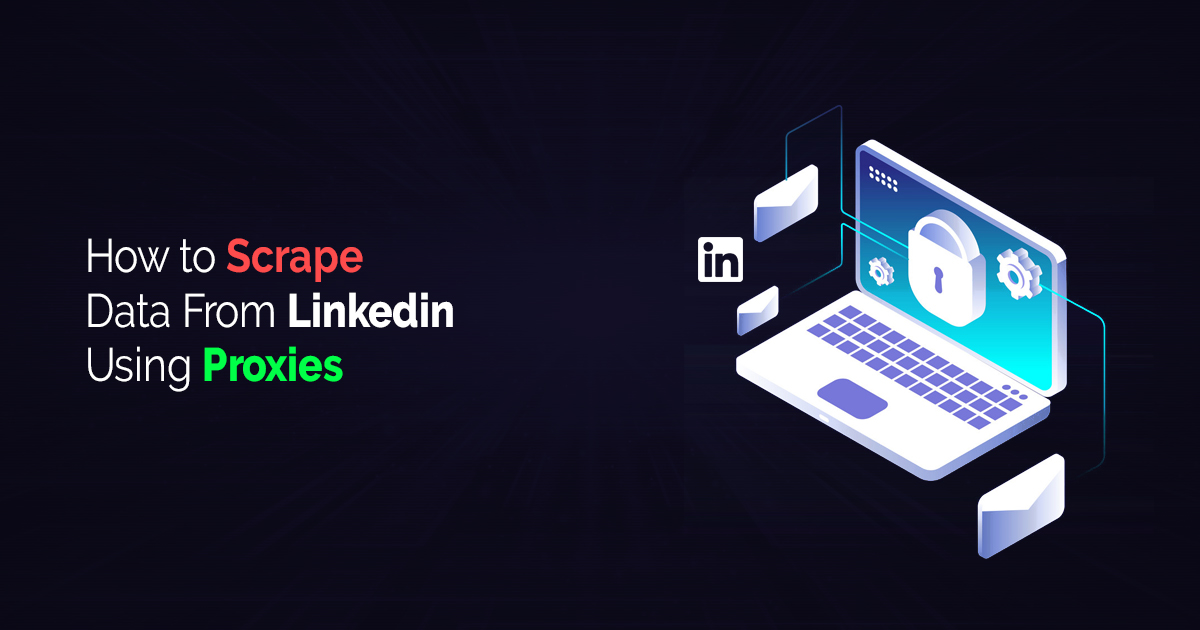How to Scrape Data from LinkedIn Easily Using Dedicated Proxies
Many websites are using data scraping to gather the information they need for their website. In this method, data or information is obtained from any website with the help of the software program. Different websites use the extracted information for different purposes. Such as LinkedIn website data is used to collect professional and personal information about professionals.
With over 500 million users, LinkedIn is a state-of-the-art digital rollout. If you do not have an account, you should probably get one. You can rub shoulders with the big players in your industry, scrape old acquaintances and strategize your next business venture.
LinkedIn and Data Scraping:
Many sites have scripts on their data, of which LinkedIn is the most common. This social networking site is primarily for professionals and is primarily for business networking rather than social networking like Facebook. We can scrape data from LinkedIn using Proxies.
It also provides an opportunity to create related job profiles or groups of local people so that they can easily communicate with other professionals.
Thus, it is clear that LinkedIn is their gold for any business, and if they can spend it, they can use it in different ways. Now, retrieving individual data is a daunting task and sometimes not possible. So scraping software can collect the same data in a matter of minutes.
While you may find it easy to get the information you need, the site needs to do some research on its site. Therefore, it is very likely that if you use your IP address to fetch data, it will be restricted, and you will not be able to use this website again. So, the simplest solution to scrape data from LinkedIn is using Proxies.
Does LinkedIn allow Scraping?
LinkedIn is against any Scraping. It recognizes the value of its users in terms of analytics and privacy and will continue to fight tooth and nail to maintain Scraper A. To summarize, you can read the clear statement entitled “Prohibition of Scraping Software.”
Although the language is solid, this article has been picked up by LinkedIn against the 100 anonymous data scrapers. You are trying to do, but it has not performed well. The verdict, in this case, has not been decided at the time of writing. That raises several issues surrounding scrapping that are beyond the scope of this article.
If you’re planning to scrape LinkedIn, be very careful. These sites don’t want you to do it, so if you plan, you have to get it right. You must scrape data from LinkedIn using Proxies.
Dedicated Proxies for LinkedIn Scraping:
It is known that with the help of a proxy, you can modify your IP address to bypass the website filter. You can use the dedicated IP address of the west coast while sitting on the east coast. Now, you are free to use scraping software that will combine essential links, such as names, email addresses, contact numbers, and more from various LinkedIn profiles.
Even if you are using a proxy, there is still the possibility that they may be banned. In such cases, you will not be identified, but you will have to use another IP address. So, scraping data from LinkedIn using Proxies is not always useful. The solution is that you can have multiple proxies and use them as alternatives.
LinkedIn or other sites are always monitoring who is taking data from them. So, your goal is to look normal and try to collect data as if it was done by different people and not the same.
There are various scrapers or data tools which are useful for scraping data from LinkedIn like LinkedIn Scraping software, LinkedIn Scraper tool, LinkedIn Scraper, and others. Using this software and Proxy, you can remove the necessary data from the website.
When you use a proxy to delete a LinkedIn profile, you should remember to clear cookies regularly so that you are not in doubt. Also, proxies should be purchased from a reputable supplier and not from anyone who sells them at a low price. In that case, you will know that most proxies are already banned!
Scraping Private Profiles:
Scraping private accounts is a specific line in the sand that LinkedIn does not want you to cross but you can do it by using LinkedIn proxies. It’s not nice that you remove public pages, but they are public, and from a legal point of view, they can’t do much about it.
Private pages are another matter. When someone signs up with LinkedIn, they are told that their information will be kept private. It will not be sold to other companies and will only be used for internal use. LinkedIn is a big problem when it comes to capturing hollow information. You can scrape data from LinkedIn using Proxies.
I do not approve of this activity if you are using your spam to sell someone else’s information. It means that you will be collecting personal information from people, disregarding their privacy clause, and then selling it to companies at a profit. Not the best thing.
However, there are other reasons to remove this information. Maybe you are looking for a job, and you want to find a programmer in a particular city or a new job is available. You can also spend on research. None of this sounds right to me, but the for-profit model doesn’t.
It would help if you use dedicated Proxy per account:
By doing the above, you are using the automation tool directly on LinkedIn. The chances of getting caught here are very high, so be sure to follow the above thread and timeout rules.
Also, make sure you’re using a proxy IP address to create an account, and then want to scrape that account. It’s all about appearing like a human being. Most people do not access LinkedIn every few hours from a long-term IP address. They access it from an IP address: their home address.


